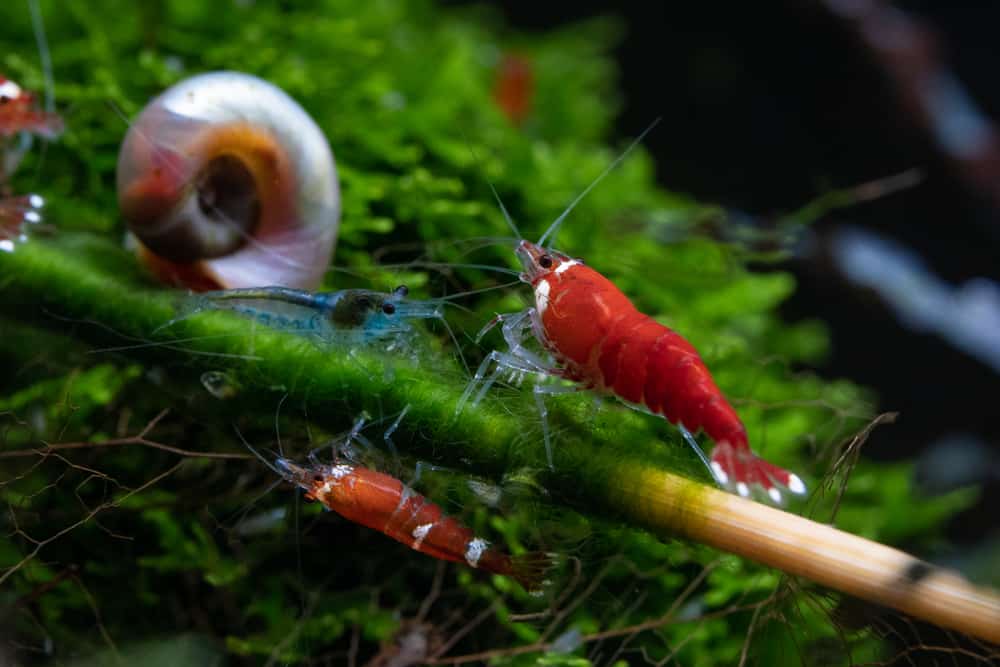
Bamboo is an interesting plant with an abundance of uses, one of which one is growing it in aquariums—or so you may think.
You’ve probably seen bamboo in fish tanks at your doctor’s office or a restaurant, and you’ve probably wondered if it was safe.
Can you include it in your home aquarium?
That’s a good question which you should always ask when introducing new plants to your aquarium.
Safety should always be your number one priority, and questioning every plant is a great idea.
Let’s get down to learning if bamboo is safe for your fish tank or not.
Is it Safe to Put Bamboo in a Fish Tank?
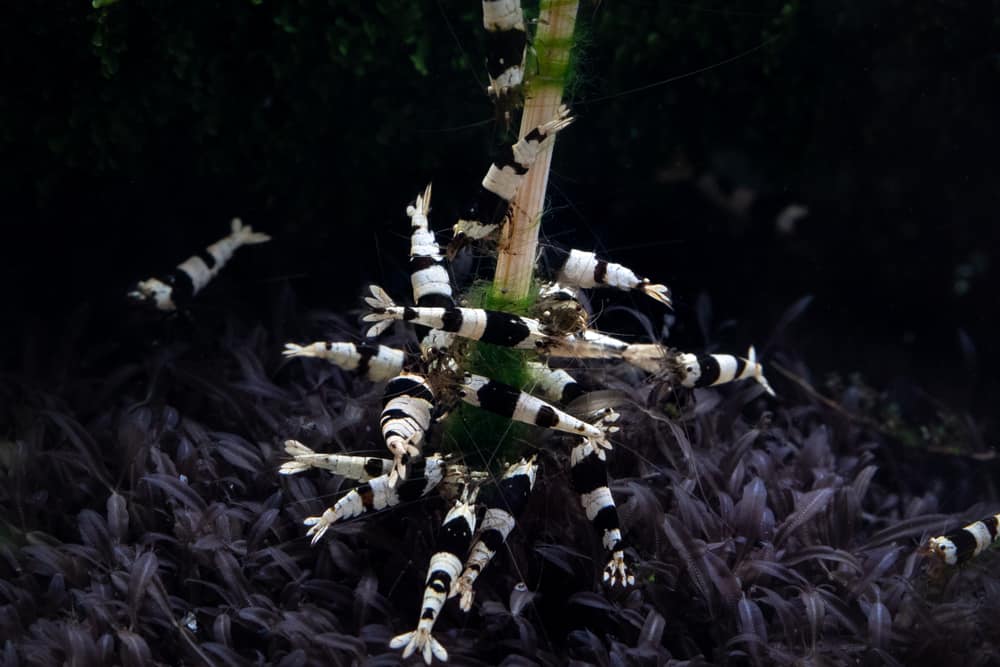
The answer is no, absolutely not.
True bamboo is not suited to survive completely submerged and will rot away in your fish tank, potentially harming your fish.
However, there is lucky bamboo, which is slightly more suitable for aquariums.
However, it’s still not advisable to completely submerge it.
When in doubt, don’t add it!
Why can’t you add them?
What harm could it really do?
Before we move on to more specific definitions, what is bamboo, anyway?
Why do people want to put it in their fish tanks?
Bamboo is a grass that can be found in a wide variety in climates, from tropical areas to cold mountains.
There are over 1,000 different species, and quite a few of those are among the fastest-growing species in the world.
Bamboo also has many uses, ranging from food for animals to food for people to construction.
It also has a huge cultural significance with lucky bamboo being a symbol of luck and fortune.
The number of stalks on your lucky bamboo plant determines the bamboo’s blessing.
It’s occasionally put into fish tanks for the aesthetic.
The right kind can also have a couple of benefits, but it’s not all sunshine.
There can also be hidden dangers when it comes to adding bamboo to your fish tank.
True Bamboo
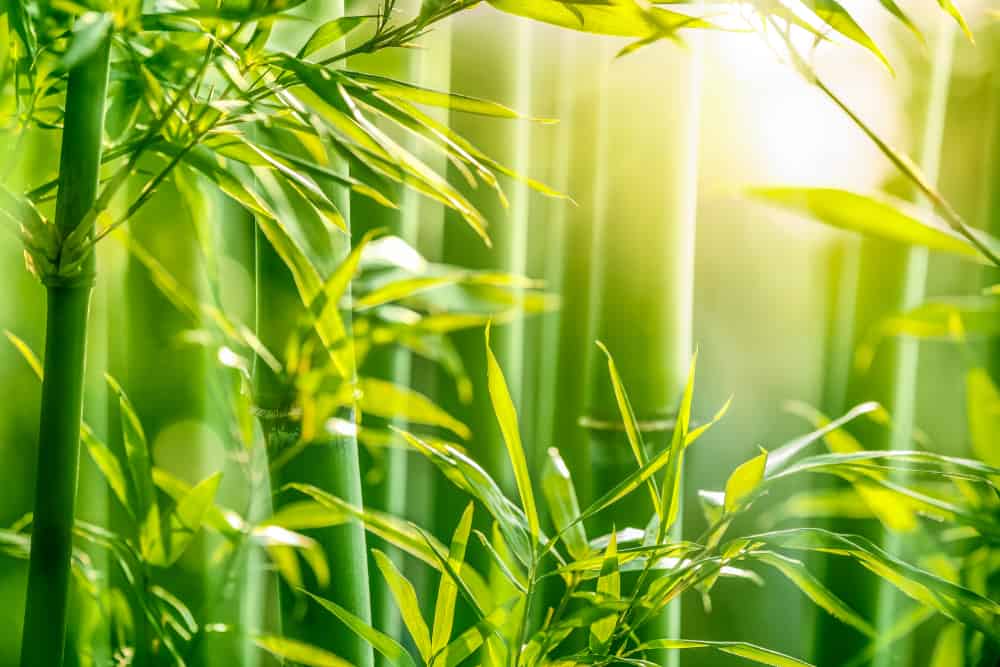
Despite what you might have heard, bamboo is absolutely not an aquatic plant, and will begin to die and rot when put in a fish tank.
The water will foul, and the death of the bamboo will release ammonia into the water, potentially killing your fish.
However, if you already have some bamboo on your hands, don’t worry about having to return it.
You can grow bamboo inside!
True bamboo should be planted in a pot with a slightly sandy soil, and it should get bright light or full sunlight.
As far as water goes, it should be watered regularly, have good drainage, and get an even amount of liquid every time you water it.
Just keep in mind that bamboo is toxic when consumed by cats and dogs, and it should be kept away from them.
If your pet ingests bamboo, take them to a vet immediately.
Lucky Bamboo
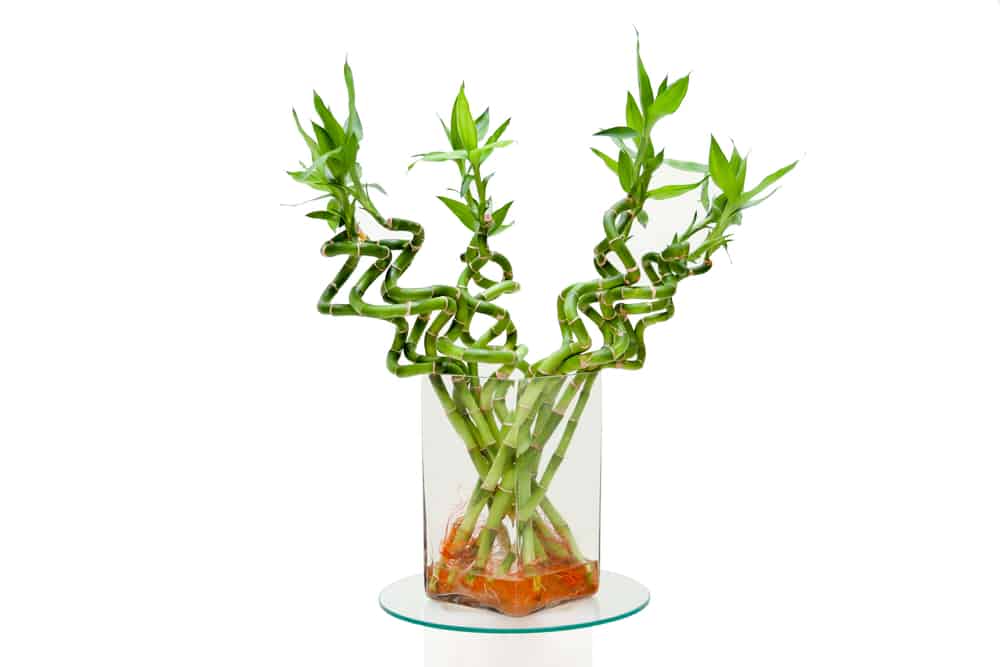
Lucky bamboo, also known as the Dracaena Sanderiana, is slightly more suitable for an aquarium—as long as it’s not completely submerged.
Lucky bamboo can be planted in your aquarium, but only the lower parts, like the roots.
The leaves should never be submerged in water. If they are, you’ll notice them turning yellow and rotting away.
If this happens, more toxic substances can be released into the water.
To grow lucky bamboo in your tank, you’ll want to start with a tank that is somewhat deep.
Then you should make sure they have a sufficient amount of substrate (about four inches) and that the water is well-aerated.
Once all those needs have been met, there really isn’t a lot left to worry about.
Lucky bamboo doesn’t require a lot of light, and it gets its nutrients from your fish’s waste.
Just be sure to keep a close eye on it, make sure its leaves don’t enter the water, and make sure it doesn’t turn yellow.
However, it’s not all bad!
There are some real benefits to planting lucky bamboo in your tank.
It can absorb nitrites and actually help prevent ammonia from accumulating.
As long as it’s not yellowing, you’re in the clear and will be getting nothing but the benefits!
How to Revive Yellowing Bamboo

If your bamboo begins to yellow, it isn’t the end of its days.
There’s still a chance it can be saved!
The first thing you should do is take it out of the tank (to avoid any danger to your fish), then try to identify what could be causing the plant to die.
There are a large number of factors which could kill off your bamboo, like too much light, too much fertilizer, chemicals that may be in the water, and the wrong temperature.
If the leaves are yellowing, use scissors to remove the dying portions of the leaves, and try rinsing it and placing it in a vase of water.
Use bottled water at room temperature, changing the water in the vase every seven to 10 days, and keep it out of direct sunlight.
You’ll want the temperature to stay between 65 and 85 degrees, and only fertilize it with a fertilizer made for water-based plants.
Meanwhile, if the stems are yellow, there isn’t much to be done.
If you would still like to give it a shot, get started by cutting back the stem to remove the yellow, and do as we’ve instructed above to try and revive it.
When your bamboo is looking better, you can move it back to your fish tank.
Just be sure to keep an eye on it to make sure it doesn’t begin to die again.
The Difference Between Real and Lucky Bamboo

You might be wondering if there’s any difference at all between the two types of bamboo, and the answer is yes!
The biggest difference between the two is their ability to survive in water, and the fact that lucky bamboo technically isn’t bamboo at all!
While it does look a lot like bamboo, it’s actually called dacaena, and is technically an herb, while true bamboo is really a grass.
One thing they have in common, though, is their potentially toxic properties.
If you do decide to plant lucky bamboo in your tank, you’ll still be putting extra responsibilities on your shoulders.
Which Fish like Lucky Bamboo?
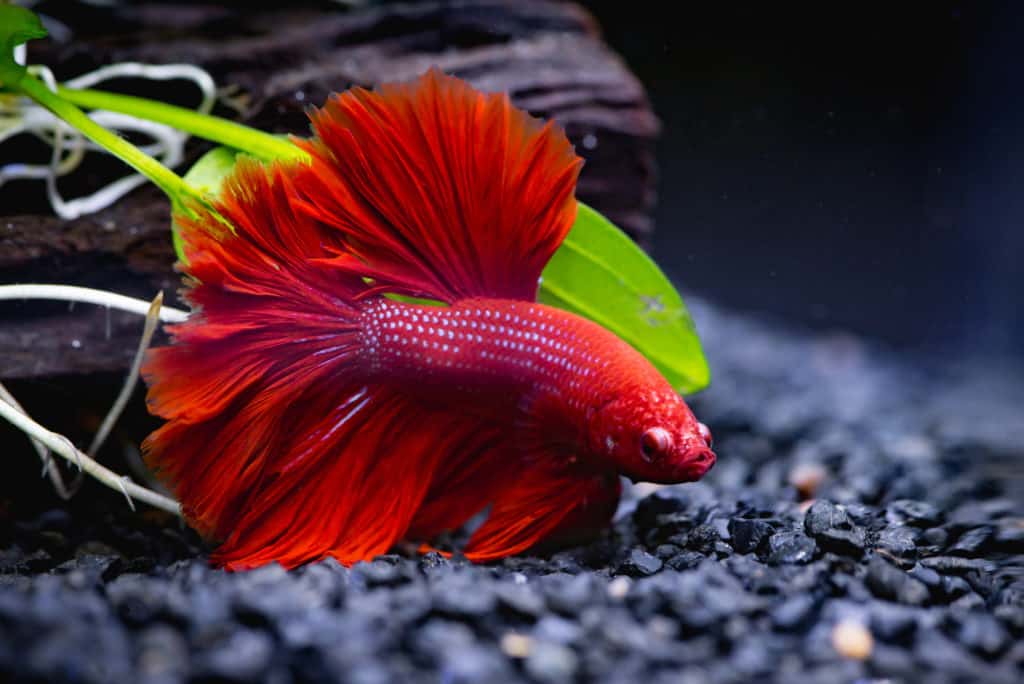
A good question to ask yourself before you add lucky bamboo to your tank is whether your fish will like it in their environment or not.
Are there any fish that like lucky bamboo?
Yes! Bettas can have lucky bamboo in their tanks.
The bamboo has a big hand in enriching the environment for them, and they even come from the same region.
In addition to Bettas, you can keep lucky bamboo in just about any tank, so long as it’s cared for properly.
Alternatives to Put in Your Tank Instead of Bamboo

If you still want bamboo in your tank to complete your aesthetic, we can’t blame you, but we also need to strongly advise against putting your fish at risk.
Thankfully, there’s a way to meet in the middle because there are plants that look like bamboo which are safe to plant in your aquarium!
It can be difficult to find safe alternatives, so you may have to dig deep or ask a local expert for their advice.
That being said, let’s dive right into your other options.
1. Murdannia Keisak
One plant you might be familiar with is the Murdannia keisak: a somewhat uncommon aquatic plant that looks like bamboo without all the risks!
This adorable little plant comes from the warmer areas of Asia, and it isn’t difficult to introduce it to your aquarium in the slightest.
It has a fast growth rate, enjoys water with a pH between 5 and 7, and a water temperature of 64 to 86 degrees.
2. Purple Bamboo
Another great alternative is purple bamboo, which, despite the name, is not actual bamboo, and is therefore safe.
It comes from Asia and the United States, but it is unfortunately still unknown over in Europe.
Its green leaves and purple stems are sure to stand out and add just the pop your tank needs, while sticking to your tank’s theme.
It’s somewhat rare, but if you do happen to get your hands on it, it requires a lot of light and CO2 when it’s completely submerged.
3. A Plastic Plant
Our final alternative is one you might have seen coming: a plastic plant.
You can find bamboo decorations made out of non-toxic plastic which will give you the look and feel of bamboo without the risks.
One thing to watch out for are decorations that are very sharp or have rough edges.
If they’re too sharp, they may tear up your fish’s fins, especially if it’s a Betta.
On the other hand, an upside is that a plastic plant won’t throw your tank’s pH off balance, won’t release any harmful components, and won’t take up any oxygen.
Plus, you know it won’t grow and take up more space than your fish have to spare.
Our Advice

With all the potential risks laid out on the table, it’s time to make a decision.
Should you plant lucky bamboo in your tank after all?
Though there is technically a relatively safe way to plant lucky bamboo in your tank, we wouldn’t advise taking the risk.
If a plant or decoration in your tank has a high risk of killing your fish or fouling the water, it’s better to simply avoid it.
You should go with your gut. If you feel like something might go wrong or this isn’t the right plant for your tank, listen to your instincts.
Finally, if you really, truly want bamboo in your tank, there is a safe way to use dried bamboo as decor.
You can put dried true bamboo in your tank as long as you boil it for 30 minutes beforehand to kill any dormant mold and pathogens that might be lurking.
Your Bamboo, Your Tank, and You
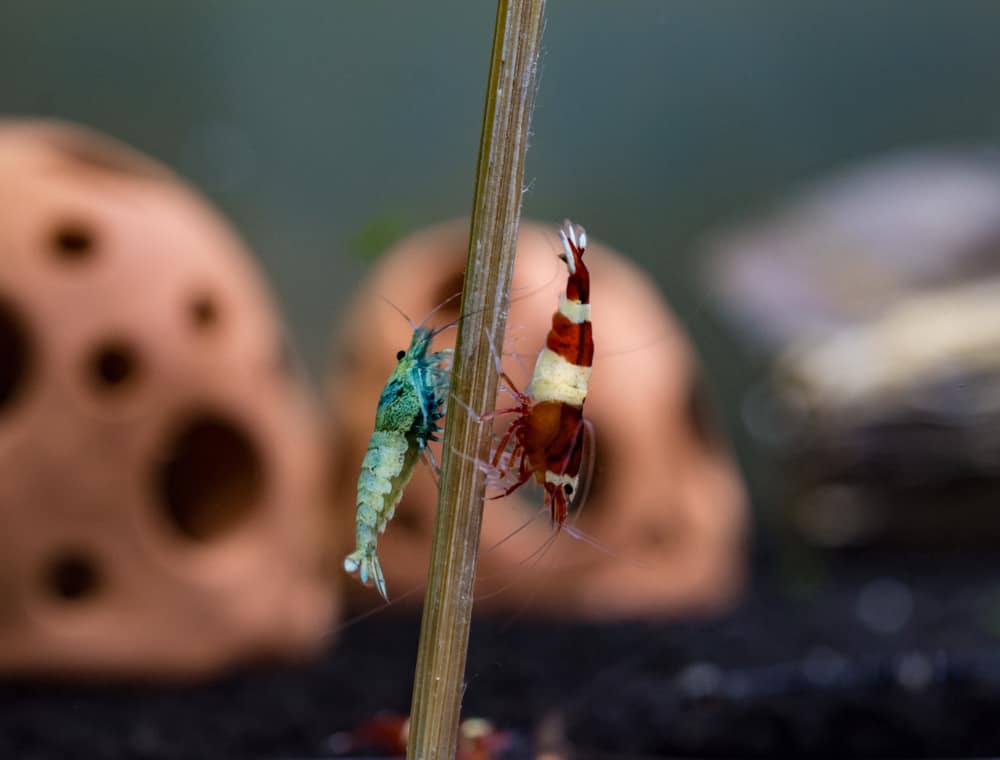
With everything reviewed and read up on, you’re now another step closer to setting up your best tank yet.
You now know how to keep your fish safe from bamboo, and how to provide them with plants that are pleasing to the eye while staying safe.
We hope your tank looks amazing when you’re done, and we hope whatever plant you choose lives a long life and keeps your tank looking great for years to come.
Just remember to prioritize safety over aesthetic!
What did you end up planting in your tank?
Would you plant lucky bamboo in your tank?
Do you have any alternatives to recommend?
Let us know by leaving a comment below.
We’re always looking forward to hearing what you have to say.
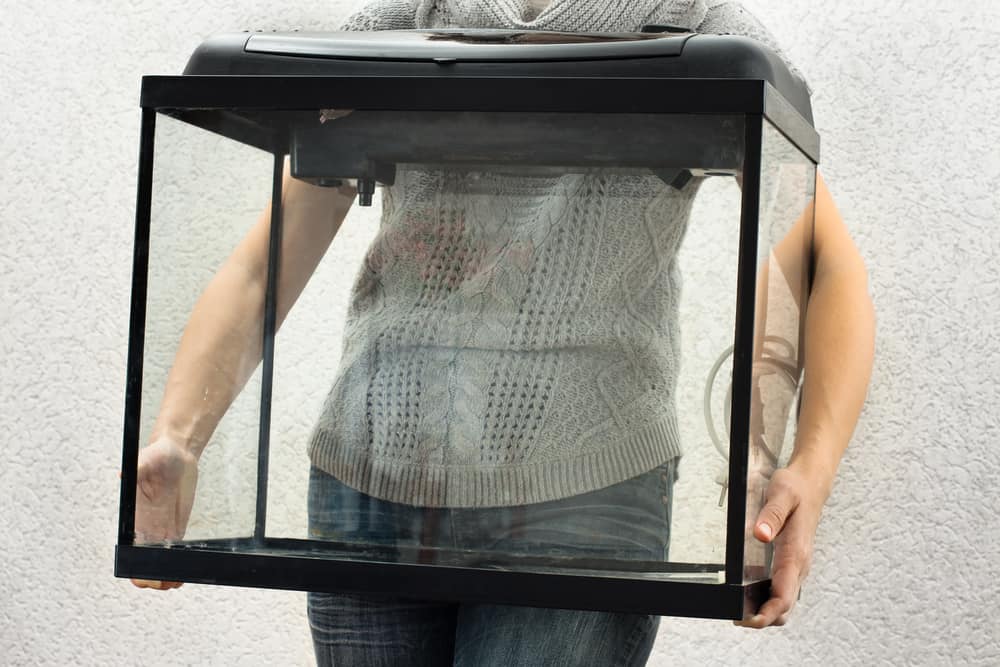
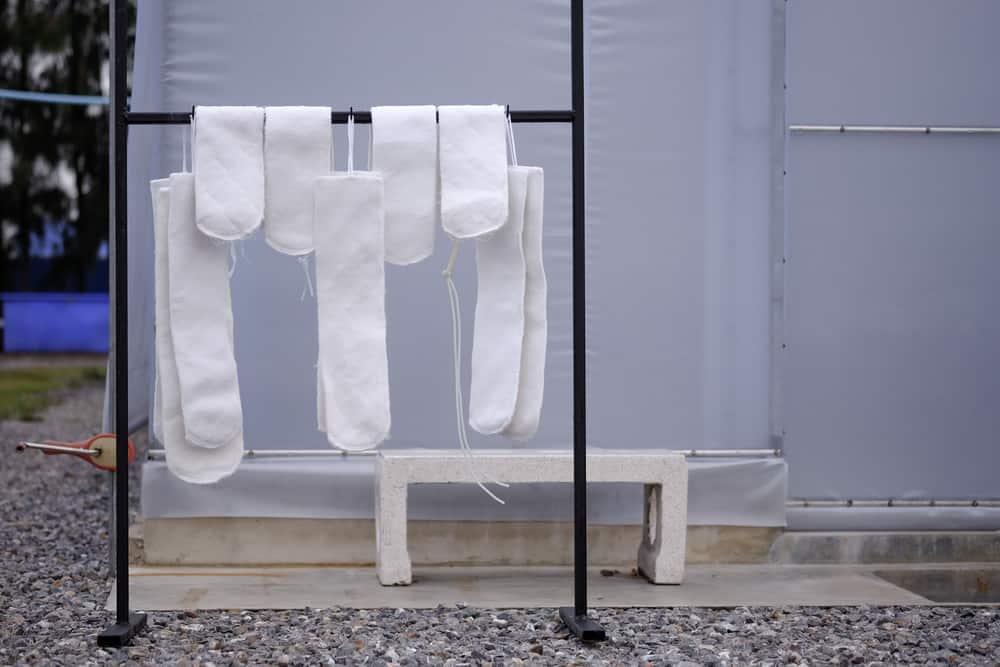
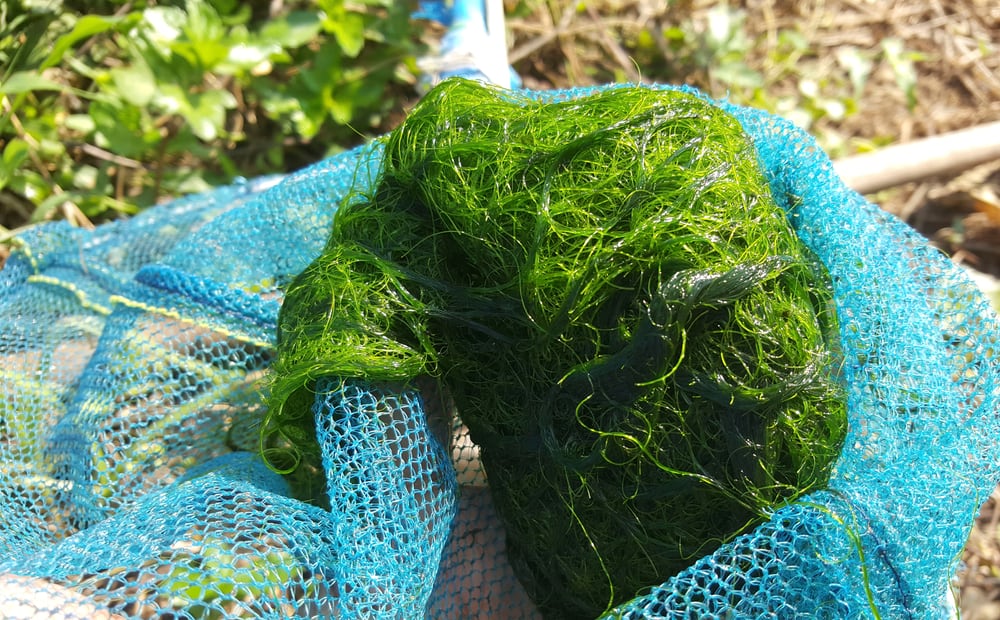
Leave a Reply
You must be logged in to post a comment.